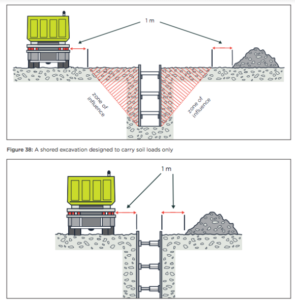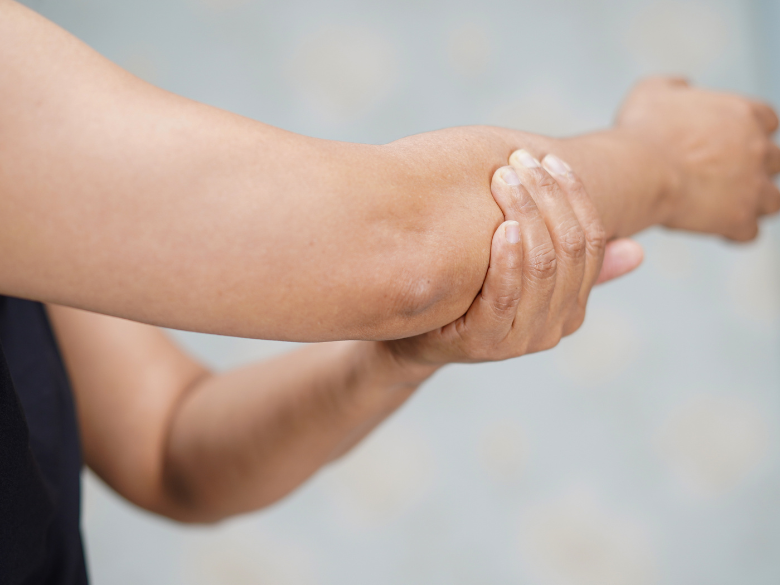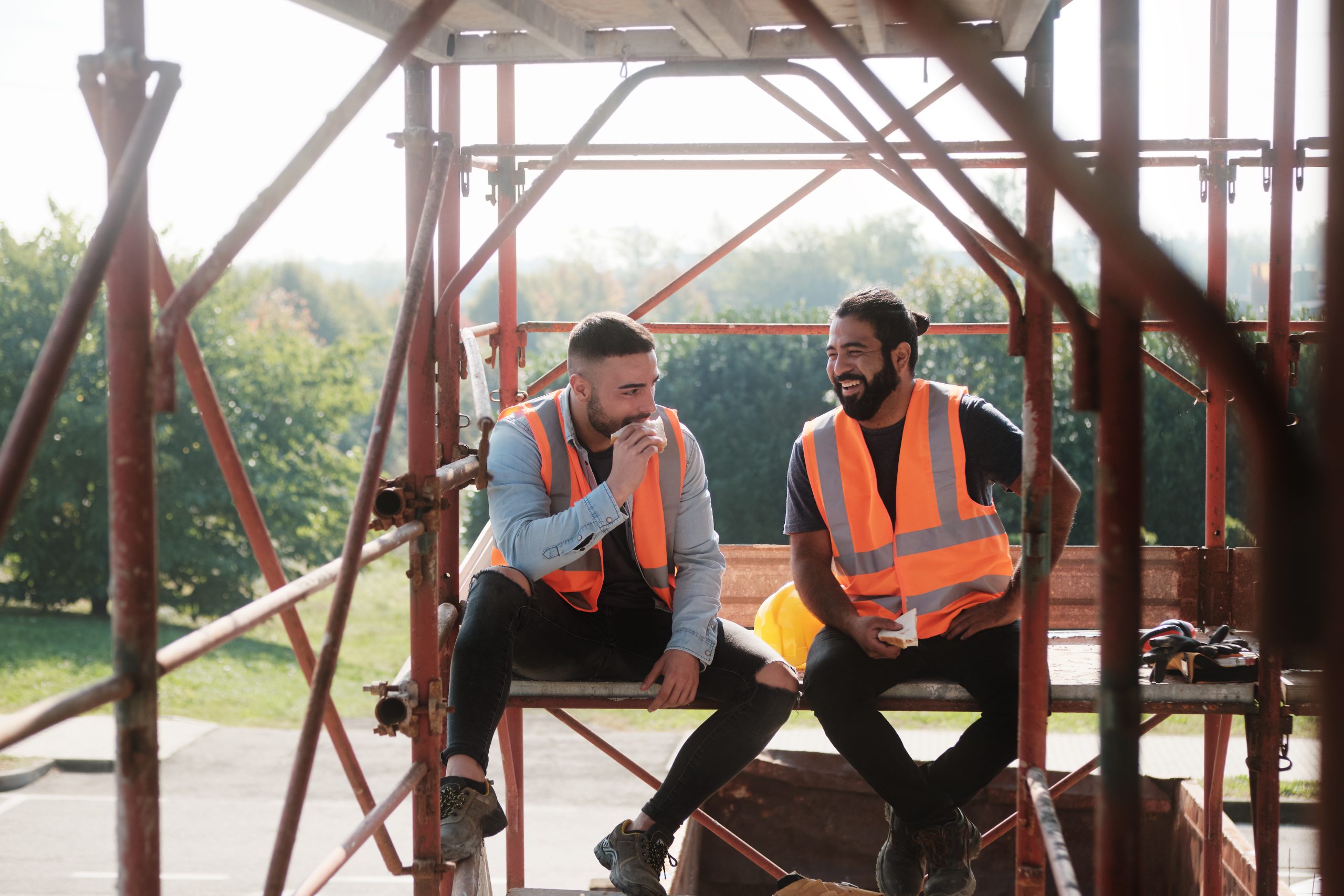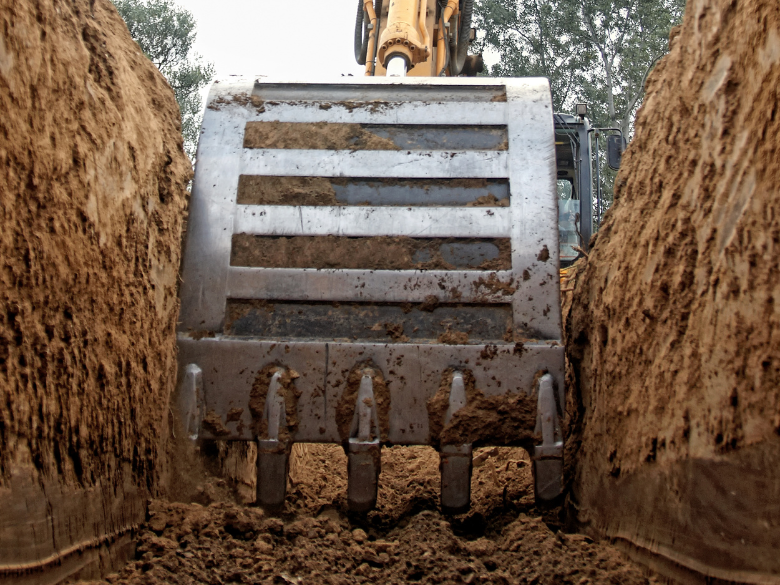
The holidays are done and dusted, and it’s time to ease back into work. Reopening your site safely is just as important as shutting it down properly and the New Year is the perfect chance to reset, refocus, and set the tone for the months ahead.
After a couple of weeks off, it’s normal for the team to have a bit of Mondayitis. So on day one, take it slow and run through a few key steps to get everyone back on track safely.
Before anyone gets stuck in, hold a Toolbox meeting.
Review SSSP (Site-Specific Safety Plan), walk through emergency procedures, and ensure everyone is fit for work and mentally ready after the break.
A lot can change while you’re off-site.
Walk the site and note any new hazards or risks, check fences and gates, and make sure everything is still secure.
Weather and time can take a toll. Check scaffolds, excavations, temporary structures, and anything else that could have shifted or been damaged while you were away.
Before the team starts using anything, run inspections and pre-starts. Make sure tools, gear, and mobile plant are in good working condition.
Think about a soft start. Give everyone time to check their work areas, ease into the pace, and remember that safety is the priority.
Also keep in mind: after a couple of weeks relaxing in air-con, people may not be ready for full heat exposure straight away.
Hot weather brings extra risks, so put simple steps in place to keep your team safe and comfortable.
Provide shade and shelter: Set up shade tents or covered areas outdoors. For indoor work, open windows or use fans to keep air moving.
Keep everyone hydrated and protected: Make sure workers always have access to drinking water, and encourage sunscreen, lightweight clothing, sunglasses, and sun-protective hats.
Watch for signs of heat-related illness: Everyone reacts differently to heat. Keep an eye out for symptoms like:
If someone shows symptoms, provide first aid and seek medical help if needed.
If temperatures get extreme, it might be safer to pause work until conditions improve.
Where possible, shift heavy physical tasks to machinery to reduce heat exposure.
Safety is a team effort. Remind everyone to check in on their mates and report any heat stress symptoms early. Quick action can stop things from getting worse.
Keep your team’s health, safety, and well-being front of mind as you head into the New Year.
Here are some handy resources to help:
If you need support or have questions, our Advisory Team is here to help on 1800 954 702 .
The Christmas break is nearly here. You’re probably counting down the days until you can relax and spend some proper time with the family and friends.
But before you lock up for the holidays, let’s make sure your site stays safe and secure. We’re all rushing to finish jobs before shutdown, summer’s heating up, there are Christmas catch ups to organise, and everyone’s tired. That’s when shortcuts start looking tempting.
The good news? A bit of prep now means you can actually enjoy your break without worrying about your site. No phone calls about vandalism. No nasty surprises when you get back. Just a proper holiday.
An empty construction site during the holidays can attract unwanted attention and can greatly increase the chance of incidents. Locked gates help, but unsecured sites are vulnerable to trespassers, theft, and vandalism.
Before you leave: Do a Site Review on the HazardCo App on your last day, that way you’ll know you haven’t missed anything.
When you’re back: Do another Site Review on your first day back. You’ll quickly spot any problems that cropped up while you were away.
Both reviews are saved in your system, so you’ve got a record of your site’s condition before and after shutdown.
If you do need someone on site during the break, you need a lone worker plan in place to make sure they stay safe. Key things to cover:
Spending some time before the break working through our site security checklist now means you can hopefully switch off over Christmas. No wondering if you’ve left something unsecured. No phone calls interrupting your downtime.
Need a hand? Give our Advisory team a call on 1800 954 702 or email info@hazardco.com and we can give you some tips on getting your site ready for shutdown.
Have a safe and restful Christmas.
We’ve heard all sorts of myths and misconceptions when it comes to health and safety. We’re here to debunk some of the more common ones we hear.
Back in the day we’d agree with you on this one, however times have changed. With a digital system (*cough*, HazardCo), you can complete your health and safety quickly and easily.
Did you know our members reduced health and safety admin time by 50% when they switched from paper systems? Our easy to use App will guide you through what needs to be done to ensure you’re on top of your health and safety.
Just because you haven’t had an incident on-site for a while doesn’t mean it can’t happen. The more often you’re around the same risk, the easier it is to ignore it, but the danger is still there.
Construction sites are always changing, and with every stage of the build, new hazards can show up. That’s why it’s important to regularly check your safety measures and adjust them when needed, so you and your mates can keep working safely.
HazardCo members are proven to be twice as safe as the industry average and helps you to stay on top of your health and safety at all times. Learn about the common incidents on-site and how to reduce the risk.
The role of the regulators is to reduce workplace harm. There are still many incidents happening on residential building sites, that is why it remains a big focus for them. The regulators often send out safety alerts about recent issues and risks, like falls from height.
Health and safety isn’t just about following the regulators’ rules, it’s about protecting your workers and others on site. Staying on top of it can mean:
Each Safety Plan (WHS Management Plan / Health and Safety Coordination Plan) must be specific to the site.
Sure, some key hazards and risks will be the same across projects, therefore certain content may remain the same from project to project however, it’s essential that a site specific safety plan is created, reviewed and amended for each project.
On construction sites, the principal contractor has overall responsibility for managing health and safety, but many businesses and people also share duties, from contractors and suppliers to building owners.
This means tasks like managing risks, consulting workers, providing training, reporting incidents, first aid, and emergency planning must be coordinated between all parties. Everyone involved has a legal duty of care, so it’s essential to consult, cooperate, and communicate clearly.
Setting safety expectations in contracts, preparing a Site Specific Safety Plan (SSSP), carrying out inductions, using tools like the HazardCo App for reporting and monitoring, and holding regular toolbox talks all help ensure workers are protected and legal obligations are met.
Find out more about sharing health and safety duties in construction.
A near miss is an incident that could have caused harm but didn’t, and it’s just as important to report and record as an actual injury. Too often these are brushed off, but treating them seriously helps identify risks before they turn into something worse.
By encouraging near miss reporting, businesses can spot patterns, improve safety controls, and build a culture of open conversations about health and safety.
Using tools like the HazardCo App makes reporting quick and easy, adds incidents to a digital register, and allows them to be reviewed and discussed at toolbox meetings.
The more near misses are reported, the better prepared everyone is to prevent serious incidents and keep people safe on-site. Read more about the importance of reporting and recording near misses.
Health is often overlooked in construction, but it’s one of the biggest reasons workers take time off and businesses face extra costs. Both physical and mental health matter.
Physical risks like heavy lifting, repetitive movements, awkward postures, or long hours can lead to musculoskeletal injuries such as sprains, strains, and back or joint pain. These injuries can build up over time and are the leading cause of workers’ compensation claims.
On top of that, construction workers face health hazards like dust, chemicals, and noise, which is why monitoring workers’ health is so important. Mental health is just as critical, construction workers are at much higher risk of suicide than the general population, and workplaces have a responsibility to manage stress, bullying, and other risks to wellbeing.
Poor health on-site affects not just the worker but also deadlines, team morale, and the bottom line. By planning tasks properly, rotating jobs, using the right equipment, encouraging open conversations, and monitoring risks, businesses can keep workers safe, healthy, and more productive.
Get the best from your team and work safer and healthier. Find out more about the importance of looking after you and your worker’s physical and mental health.
MSDs (Musculoskeletal Disorders) are the most common type of work-related injury in Australia. In fact, over half of all serious workers’ compensation claims in construction back in 2024 were linked to MSDs.
MSDs cause pain in muscles, bones, ligaments, tendons, and nerves. The pain can be mild or so severe that it impacts your day-to-day life.
Often, physical strain gets most of the attention, but the real picture is bigger. These factors work together, and understanding how they connect is key to preventing injuries.
MSDs are not “just part of the job.” With the right mindset and systems in place, we can prevent them and protect both today’s workers and the next generation.
SafeWork NSW has a free program called PErforM, designed to help businesses reduce MSDs. They run workshops both in-person and online. If you’d like to know more, get in touch with us.
Health in the construction industry is often overlooked, but it has a huge impact on workers and businesses. Physical and mental health issues are among the biggest reasons for time off work and rising workers’ compensation costs across Australia. Ignoring health risks doesn’t just harm individuals, it affects productivity, deadlines, team morale, and a company’s bottom line.
The most common health issue in construction is musculoskeletal injury (MSI), caused by body stressing. These injuries account for over half of lost-time claims in many states, and around 33% of all serious claims nationally. They often result from:
Examples of injuries include sprains, strains, bruising, and ongoing pain in the back, shoulders, neck, wrists, or knees. These can happen suddenly (like a pulled muscle) or develop slowly over time.
Construction workers are regularly exposed to hazards that may not cause immediate harm but can create long-term damage. These include, but not limited to:
Psychological risks (psychosocial hazards) can be just as dangerous. Construction workers are almost twice as likely to die by suicide compared to other employed men, and young workers in other industries. Common risks include:
To learn more, we’ve developed a great resource on How to build a mentally healthy work site which provides useful tips.
When a worker is injured or unwell, costs quickly add up. Projects face delays, skills are lost on site, replacement workers may be needed, and insurance costs rise. Poor health also affects morale, making it harder to keep skilled staff.
To keep your site healthier and safer, try:
Physical and mental health are just as important as safety when it comes to protecting workers. By planning ahead, encouraging open reporting, and supporting wellbeing, businesses can prevent injuries, reduce downtime, and build stronger, safer worksites.
If you have any further questions in regards to this topic or need more support, reach out to HazardCo and speak to one of our expert Health and Safety Advisors. You can contact us on 1800 954 702.
* Safe Work Australia reporting period of 2022 – 2023.
If someone on your team is working by themselves without other people around and without direct supervision, they’re likely considered a lone worker. Whether it’s a regular thing or just every now and then, it’s your job to make sure they’re safe and supported.
It’s not just remote bush jobs. Lone workers might be team members who:
If this sounds like anyone on your team, there are a few key things you need to think about:
Lone workers may face more risks, both to their own safety and the gear or materials they’re using. You need to make sure they’re prepared and protected. Vulnerable workers like apprentices and inexperienced workers shouldn’t be working alone.
Working solo can be lonely. No banter. No team catch-ups. It takes a toll.
Stay connected with regular check-ins like phone calls, group chats, or video calls. It doesn’t need to be fancy, just make it consistent. A quick “How’s your day going?” can go a long way.
Just because someone’s working away from the team doesn’t mean they should miss out on training, updates, or important info. Keep the comms flowing so everyone’s in the know – no matter where they are.
Make sure lone workers have the tools and tech to get the job done safely and stay connected. That includes:
Simple, but it works. Pair your lone workers with a buddy – someone they can check in with daily. Share location, talk through the day’s work, and have a bit of a yarn. It keeps morale up and helps you respond faster if something’s not right.
Use the Emergency Management Plan template in your HazardCo Hub to create a clear plan for how to get help fast if something goes wrong.
Make sure your team knows what the plan is and how it works. Test it out, and keep emergency contact info up to date.
At the end of the day, look out for your lone workers the same way you would if they were right there beside you. A bit of planning and a good dose of communication makes a big difference. Put some restrictions like no High Risk Construction Work will be done by lone workers.
Need help?
If you’re a HazardCo member, the Advisory Team is just a tap away in the app. We’re here to keep things simple and help you keep your team safe, wherever they’re working.
Toolbox meetings don’t need to be a paperwork mission. With the HazardCo App, you can run quick, focused chats straight from your phone. No prep, no printing, no hassle.
The Toolbox Meeting feature guides you through what to cover, step by step, so you can hold the meeting anywhere on-site and tick off all the right boxes as you go. It’s all recorded in the app, and a full report lands in your Hub, ready to download or share with the team.
How often should we have a Toolbox meeting?
Keeping toolbox meetings regular boosts safety in three big ways: they keep safety top of mind with frequent check-ins, help build a strong culture where everyone’s looking out for each other, and give you the chance to spot and fix hazards before they turn into incidents.
What to cover in a Toolbox meeting:
Stuck for ideas on what to talk about? Here’s some great starting points:
Keep your toolbox meetings interactive by getting the crew involved, it makes a big difference. Ask for feedback at the end of each chat to see what’s working (and what’s not). Encourage the team to speak up about any issues they’ve spotted on-site. When everyone has a voice, safety becomes a team effort, not just another box to tick.
Cool tip to save you time: Use your phone’s voice-to-text tool to speak your notes out loud (just look for the little mic on your keyboard). You can even snap a quick photo to record who was there.
Working solo? You can still use the App toolbox feature to log safety convos with other tradies or subbies. Every chat counts.
And remember, the Toolbox Meeting feature isn’t just for toolboxes. Use it for pre-starts, safety meetings, or committee catch-ups too.
Keeping your site safe starts with good conversations – and with HazardCo in your hands, they’re easier than ever.
Get your team scanning in and out – it’s a no-brainer!
We get it, health and safety chats aren’t always the most exciting. But they are the most important. When everyone on-site takes part, it makes a big difference. And the easiest place to start? Get your team and subbies scanning in and out of site each day.
Your HazardCo QR code (on your Hazard Board) makes it quick and easy and the benefits stack up:
Scanning in each day is also a good nudge to stay switched on about safety. The more we talk about it, the more we act on it, spotting hazards and taking care of each other.
It also helps you:
Need help getting the team onboard? Try this:
There’s no downside, scanning in is fast, easy, and helps everyone go home safe. Got questions? Get in touch with the HazardCo team. We’re here to help.
Working with heavy machinery and managing traffic on-site can be risky. But with the right checks and planning, we can keep everyone safe.
Before starting work each day, make sure your equipment is ready to go:
Visual checks (before starting the machine):
Stationary function test (with the machine on):
Moving function test:
Using your manufacturer’s checklist or the HazardCo Heavy Machinery Prestart checklist can help you cover all these points.
Keeping vehicles and people safe on-site requires a solid traffic management plan. Here’s what to consider:
Discuss this plan during site inductions so everyone knows the rules and expectations.
Heavy machinery can affect the stability of excavations if operated too close. Keep all heavy vehicles, materials, and spoil at least one meter outside the zone of influence unless specific designs support closer operations.

Uneven ground can cause machinery to tip over, leading to serious injuries. To prevent this:
If you would like more information head over to our website or to chat with one of our friendly Advisory team please give us a call on 1800 954 702.
Demolition machinery
Working with heavy machinery can be dangerous. Incorrect use or untrained operators can lead to serious injuries or worse.
Training and supervision
Machinery should only be used by workers who are:
Regularly assess operator competency through refresher training, observations and feedback. Keep training records and verify workers have the appropriate licenses.
Before using any machinery, complete a daily prestart check. These checks must be done by a trained and competent person.
Visual checks (before turning the machine on):
Stationary test (machine is on but not moving):
Moving test (short drive):
Use the manufacturer’s pre-start checklist, or the HazardCo App Plant/Machinery Pre-start tool to guide your checks. Making sure to keep a record of your completed checks.
Quick Hitches, Safety Locks, and Exclusion Zones – Take the time to get it right
Quick hitches help you swap attachments fast – but can be dangerous if not properly secured.
Before operation:
All quick hitches must clearly show:
Store spare locking pins with the machine, and only use attachments that match the correct pin size.
Cover any machinery risks and controls in your SWMS and share it with everyone on-site.
Don’t cut corners on safety
Missing a step like skipping a daily check or rushing an attachment change can have serious consequences.
Taking five minutes to do it right can prevent serious injuries and keep your sire running safely.
If you have any questions, get in touch with the HazardCo Team today











